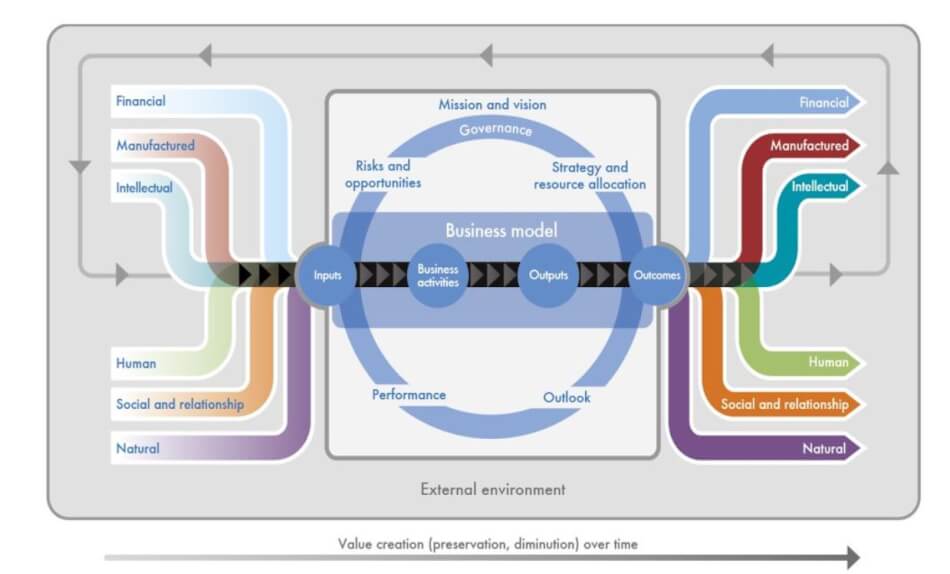
There’s a debate taking place at this very moment among some of the world’s largest and most influential manufacturers about the most effective way to measure and track corporate sustainability programs.
Many major corporations know that corporate social responsibility (CSR) and sustainability management are essential to long-lasting profits, but it’s not always clear which management methodology is the best. And when it comes to figuring out the best practices for tracking and reporting sustainability projects, there’s even more debate.
Most manufacturing supply chains are still in experimentation mode when it comes to sustainability tracking programs. What this all means is that industry powerhouses agree that sustainability is important, but there’s a lack of standards that give them, and the businesses they work alongside, a clear and simple picture of where to go.
And here’s why you should care, no matter what business you are in: when major OEMs make changes to their purchasing policies or operating procedures, there is a ripple effect throughout entire supply chains. If one of your clients decides to start following one set of sustainability standards, the pressure to demonstrate compliance with those standards gets pushed down onto you, and your own supply chain. This gets even more complicated when you have two clients following different sustainability standards, and you have the burden of complying with both.
Fundamentally, the more disparity in sustainability reporting standards that exist within an industry, the more difficult business becomes for each tier of the supply chain. That’s why industries that see the most benefit from sustainability programs are those that collaborate and agree on a specific protocol - and share their data for communal benchmarking.
The goal of this article is to highlight the most common sustainability standards used by major OEMs in the manufacturing industry, and give you the context and background about why these standards are getting attention from big business – and how you could be seeing these standards affect your own operations.
The GRI Metrics under the Spotlight
One of the frontrunners in the sustainability tracking and metrics debate is the Global Reporting Initiative (GRI) - a comprehensive set of sustainability indicators that can be used to create in-depth and economically useful sustainability reports. The GRI model addresses a large spectrum of sustainability metrics that range from basic measurements to advanced sustainability tracking. It covers everything a business would ever need to measure its sustainability progress.
The GRI has two major benefits: first, that it provides standards for an extremely broad range of social, economic, and environmental factors – giving businesses unparalleled options for what they could be tracking. Secondly, GRI reporting comes with different tiers of comprehensiveness; a business can do a satisfactory GRI report with only a few core metrics, or they can choose a tier that has a greater number of GRI metrics. This gives businesses greater flexibility in how much effort and resources they can pour into sustainability reporting.
For example, the GRI covers the most commonly-accepted sustainability metrics like your carbon footprint and workplace safety incidents, but it also covers more intensive metrics like local biodiversity, human right contributions, working with local suppliers, and training tracking. That’s the kind of data you can’t just plug into a simple spreadsheet.
GRI can also be applied to any type of business, from large to small, in any industry. As a completely voluntary standard, what you choose to include in your GRI report can be tweaked to fit your needs. Just remember that the more you include the stronger your report and the results will be. If manufacturers in your industry tend towards using the GRI standards, it’s a good idea to consider starting your own GRI report, using the most basic and smallest GRI tier. That way you can market yourself as being a GRI reporter, and you’ll have experience with the standard if your clients ask you to provide higher GRI tier reports.
At ERA we tend to recommend the GRI as your first and primary framework for two reasons: most of the major OEMs we get to work with are already using or investigating GRI, and our research shows that using GRI standards will also give you most of the data you need for other sustainability standards due to its comprehensiveness.
Triple Bottom Line
The triple bottom line approach consists of social equity, economic, and environmental factors. It’s very similar to the GRI in this way. The people, social equity, or human capital bottom line pertains to fair and beneficial business practices toward labour and the community and region in which a corporation conducts its business. A triple bottom line-focused company utilizes a structure in which the well-being of corporate, labor, and other stakeholder interests are interdependent.
Under the triple bottom line methodology:
- Social sustainability examines living wage, workplace safety, and innovative capacity.
- Economic sustainability examines equity, borrowings, and competitive prices.
- Environmental sustainability examines water supplies, solid wastes, and the climate system.
Most manufacturers have adopted a triple bottom line mindset when it coms to sustainability, and this marks an important shift from the previous way of thinking that sustainability was all about the environment. If your business still focuses all of its sustainability projects and marketing around being green, looking more closely at the triple bottom line model will be a useful starting point for you.
However, today you won’t see as many sustainability reporting projects based solely on the triple bottom line, simply because this model doesn’t necessarily come with a set of metrics or specific recommendations – instead it simply refocuses and broadens a company’s way of understanding sustainability. That means if you work for a company that is locked into only “thinking green”, you can use this model to introduce social and economic sustainability. But if your organization is looking for specific guidelines and action items to start reporting, we recommend looking at entry-level GRI reporting.
Carbon Disclosure Project
The CDP or Carbon Disclosure Project is an organization based in the United Kingdom which supports companies and cities in disclosing the environmental impact of major corporations. Its focus is on air emissions, particularly greenhouse gases. For companies that want to focus their sustainability reporting on environmental footprint and climate change, CDP is a great place to start. However, CDP provides recommendations on several core environmental factors.
The main individual programs include: climate change, water, supply chain, forests, and cities. The aim of the CDP is to make environmental reporting and risk management a common business practice.
The categories for the CDP include:
- Governance and Strategy- Includes Emissions trading, carbon credits, and engagement with policy makers
- Risk and Opportunity Management- Includes Risk management, climate change risks, climate change opportunities
- Verification- Includes Scope 1, 2, and 3 GHG emissions
- Emissions Management- Includes Emission reduction targets, reduction activities, methodology, and reporting with Scope 1 and Scope 2 breakdowns.
CDP is a fairly popular and well-respected sustainability reporting framework, and you may very well find members of your supply chain asking for data to support their CDP reporting initiatives. If you want to focus solely on environmental sustainability, CDP could be a great fit for your business.
The International Integrated Reporting Council (IIRC)

The International Integrated Reporting Council (IIRC) is a global coalition of regulators, investors, companies, standard setters, the accounting profession and NGOs. The IIRC’s vision is to align capital allocation and corporate behaviour to wider goals of financial stability and sustainable development through the cycle of integrated reporting and thinking.
The International Integrated Reporting Framework categorises activities and outputs of an organization as financial, manufactured, intellectual, human, social and relationship, and natural. Across these six categories, the Integrated Report gives communication about how an organization’s strategy, governance, performance, and prospects in the context of its external environment, lead to the creation of value in the short, medium and long term.
IIRC is a good fit if you’re looking for a comprehensive reporting option that is a bit more corporate level than the GRI. IIRC is especially useful when it comes to proving sustainable value to potential investors.
What to take away from the sustainability tracking debate
There are two important takeaways from the whole sustainable manufacturing debate: first, that sustainability is, more than ever, a vital part of running a successful business; and secondly that there’s a growing demand for a standardized method of approaching sustainability.
This growing interest in standardization will require your business to work closely with your competitors, allies, and all those other sectors you never thought you would share a common goal with. Communication up and down your supply chain is paramount.
The length and intensity of the sustainability methodology debate is proof that sustainable development and manufacturing is not simply a fad that will fade out in a few years.
This probably comes as no surprise to our readers, but practices like environmentally preferable purchasing and pre-emptive supply chain assessments will soon be standard practices across every industry. Manufacturing is a large and lucrative enough industry that it has been leading the way for most global sustainability trends, and once it adopts a standardized methodology, nearly every other business and institution will follow suit.
This quest to find a standardized system for sustainability tracking also demonstrates that there’s a demand for an industry-wide method that produces reports that can be shared and benchmarked.
As sustainability tracking becomes more standardized, transparency about your performance, outputs, emissions, and investments will also increase. The arena for business success is about to change dramatically once sustainability tracking becomes a standard practice - so prepare yourself now.

This blog was co-authored by:


Tags:
Sustainability
January 25, 2013
Comments